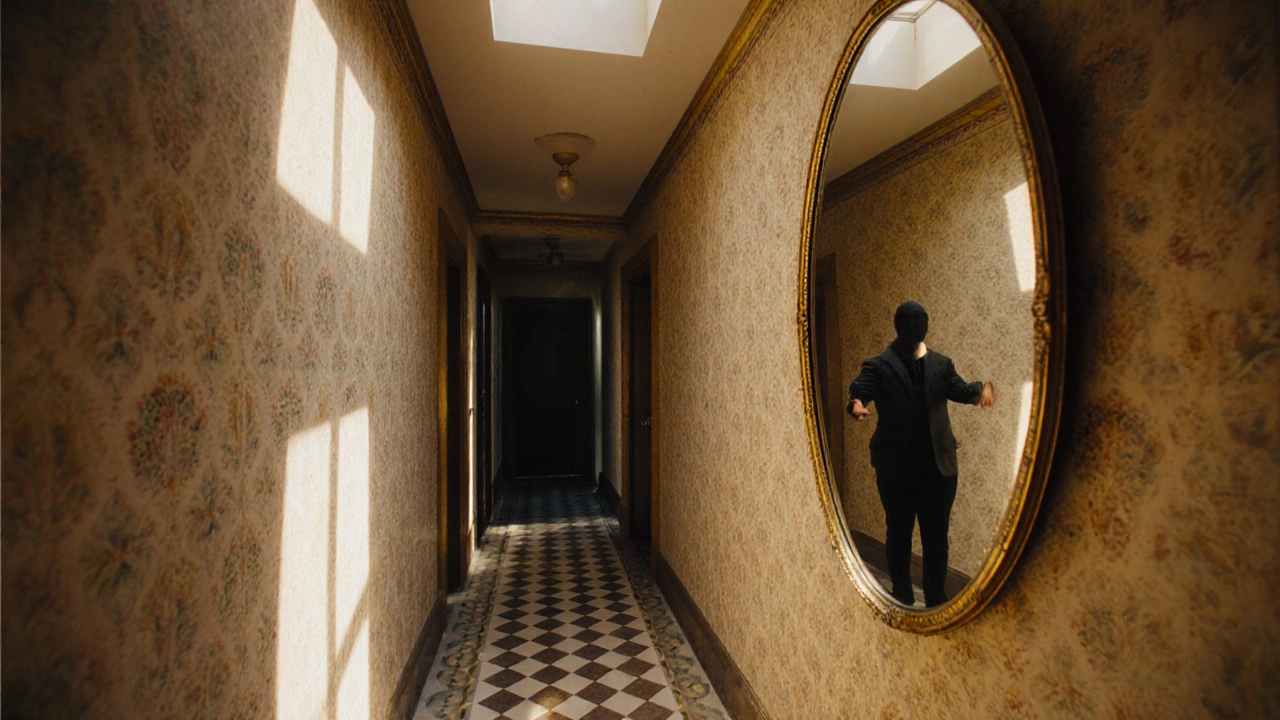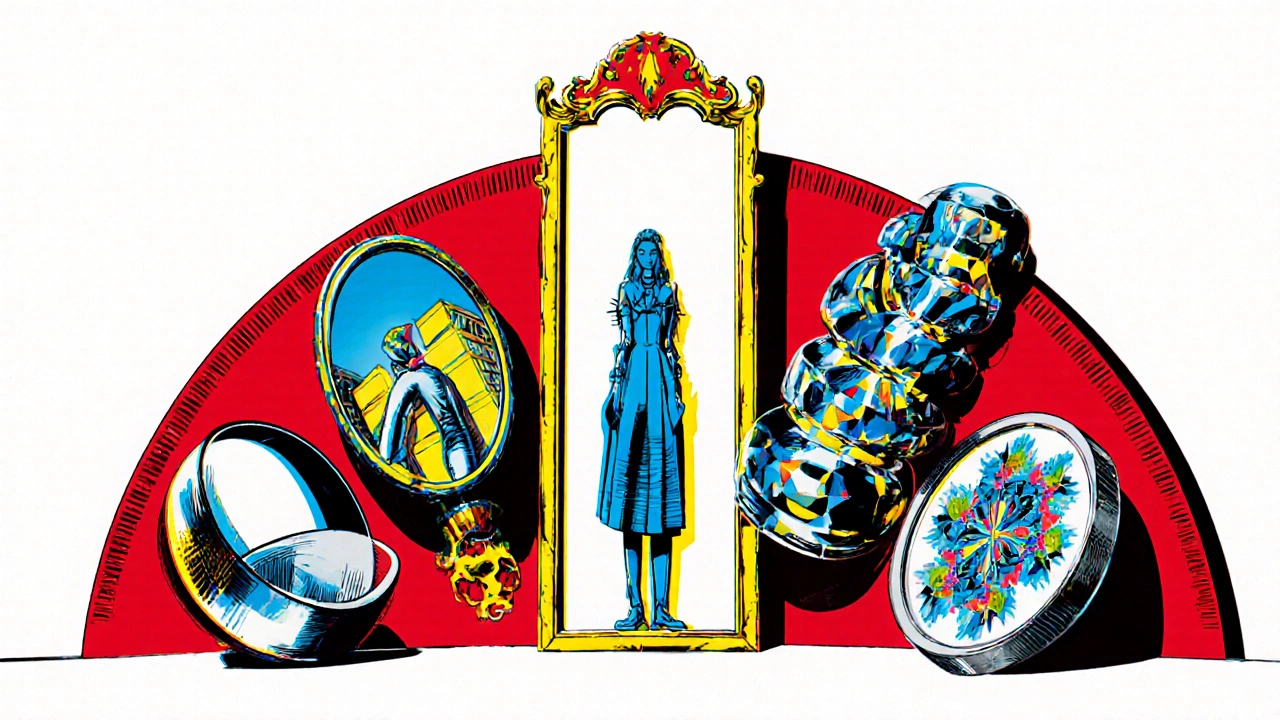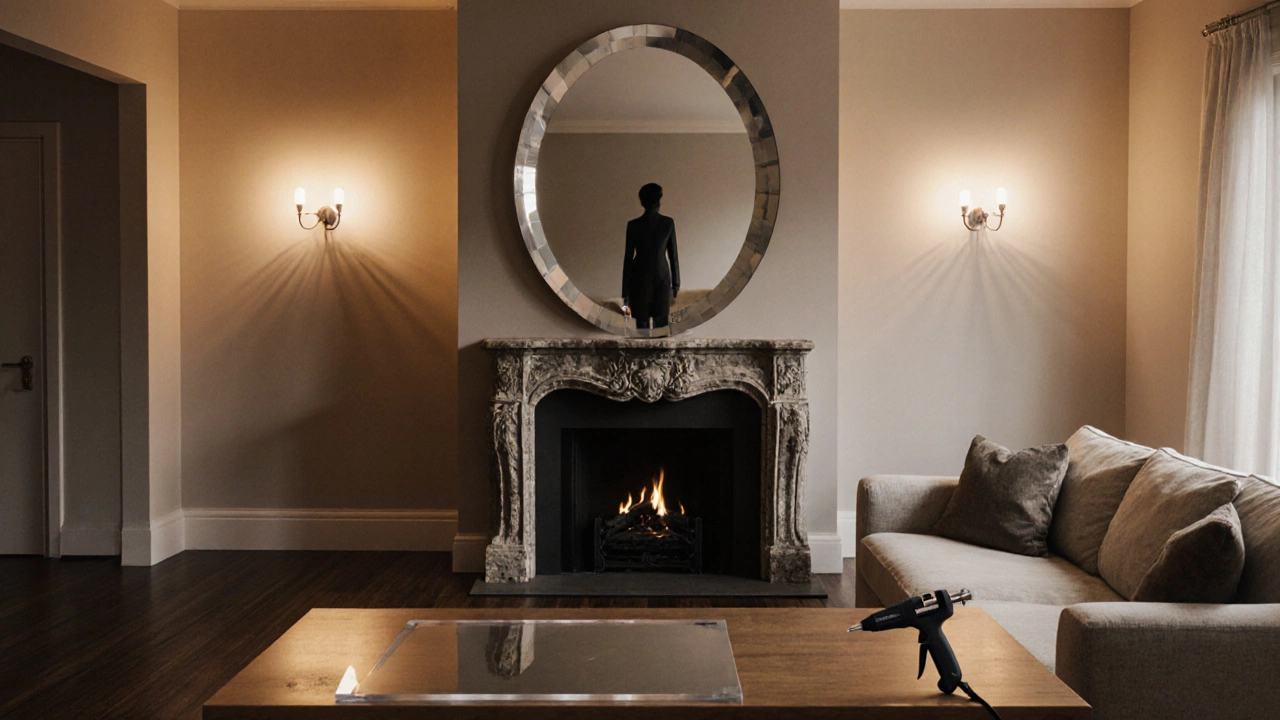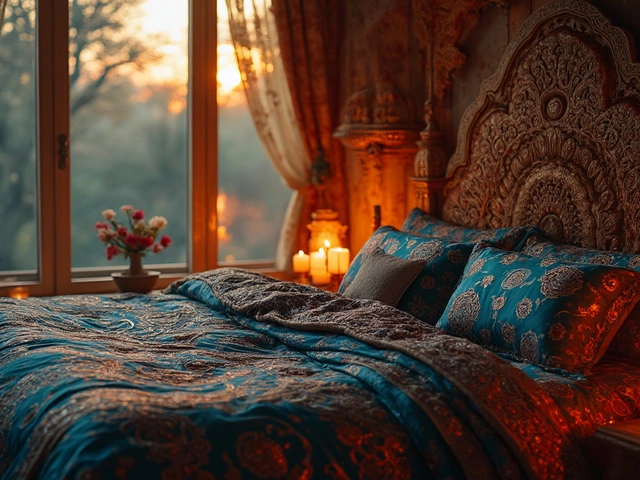
When you walk past a hallway that twists your reflection into a silly grin or a stretched silhouette, you’re looking at what most people call a wacky mirror. The official term for these eye‑catching pieces is a funhouse mirror a distorting mirror designed to bend light and create exaggerated or compressed reflections. In this guide we’ll unpack everything you need to know-from the science behind the distortion to the best places to buy one for your home.
Quick Takeaways
- Funhouse mirrors are also known as distorting, illusion or novelty mirrors.
- They come in several shapes: convex, concave, anamorphic, kaleidoscopic and mixed‑media.
- Originating in 19th‑century amusement parks, they now appear in interior design, retail displays, and themed events.
- Choosing the right one depends on size, level of distortion, frame material, and safety glass rating.
- Cleaning with a soft microfiber cloth and mild soap keeps the reflective surface clear without harming the coating.
What Exactly Is a Funhouse Mirror?
A funhouse mirror belongs to the broader family of distorting mirrors mirrors that intentionally alter the shape of reflected images. Unlike standard flat mirrors that preserve proportions, these pieces use curved glass or specially coated plastic to bend incoming light rays. The result is an optical illusion that can make a person look taller, shorter, wider, or even split into multiple fragments.
Types of Wacky Mirrors and How They Work
The market offers several distinct designs, each creating a different visual effect. Below is a quick guide to the most common varieties.
| Mirror Type | Shape | Typical Distortion | Common Use |
|---|---|---|---|
| Convex | Outward‑curving surface | Widens and shortens reflections | Security mirrors, parking garages |
| Concave | Inward‑curving surface | Lengthens and narrows reflections | Makeup stations, decorative wall art |
| Anamorphic | Irregular, multi‑axis curves | Highly exaggerated, often comedic | Amusement parks, photo booths |
| Kaleidoscopic | Fragmented, mirrored facets | Creates mosaic‑like patterns | Nightclubs, artistic installations |
| Mixed‑media | Glass combined with acrylic or metal frames | Custom distortions, themed designs | Retail displays, themed events |
Each type leverages basic optics. convex mirrors use outward curvature to diverge light rays, producing a smaller, wider image. concave mirrors converge light toward a focal point, stretching the reflection vertically. Anamorphic designs combine multiple curves, while kaleidoscopic mirrors split the image into many fragments.

History: From Circus Sideshows to Modern Interiors
The first documented funhouse mirrors appeared in European traveling fairs during the late 1800s. They were a staple of the amusement park a leisure venue featuring rides, games, and novelty attractions experience, offering a low‑cost way to surprise visitors.
In the 1930s, Hollywood set designers adopted them to add surreal visual flair to movies like "The Cabinet of Dr. Caligari". By the 1970s, psychedelic culture embraced kaleidoscopic mirrors for concerts and nightclubs. Today, interior‑design blogs showcase them as statement pieces that turn a hallway or bathroom into a playful focal point.
Where You’ll Find Funhouse Mirrors Today
Beyond the classic carnival booth, these mirrors have migrated into several everyday settings:
- Retail windows: Brands use oversized anamorphic mirrors to draw foot traffic.
- Home decor: Designers place a concave mirror above a fireplace to create a sense of height.
- Event spaces: Wedding photographers love kaleidoscopic mirrors for whimsical portrait backdrops.
- Commercial venues: Airports and malls install convex safety mirrors for security while adding a quirky aesthetic.
Choosing the Right Funhouse Mirror for Your Space
If you’re hunting for funhouse mirrors to spice up your living room, consider these factors:
- Size & placement: Measure the wall or floor area. A large concave mirror works well behind a couch, while a compact convex piece suits a hallway corner.
- Level of distortion: For subtle elegance, pick a mild concave shape. For full‑blown comedy, go with an anamorphic design.
- Frame material: Metal frames add industrial vibe; wooden frames blend with rustic decor.
- Safety rating: Look for mirrors made from tempered or laminated safety glass, especially in homes with children.
- Supplier reputation: Established mirror manufacturers companies that specialize in producing high‑quality reflective surfaces often provide warranties and detailed installation guides.

Care & Maintenance Tips
Keeping your mirror looking sharp is easier than you think. Follow these steps:
- Dust weekly with a soft microfiber cloth to avoid scratches.
- For smudges, mix a few drops of dish soap with warm water, dampen the cloth, and wipe gently.
- Avoid abrasive cleaners, ammonia, or vinegar on coated surfaces-they can degrade the reflective layer.
- Check mounting hardware quarterly; loose brackets can become safety hazards.
DIY Funhouse Mirror Projects
Want a custom piece without spending a fortune? Here’s a simple DIY method:
- Buy a sheet of clear acrylic (at least 3mm thick) from a local craft store.
- Heat the acrylic using a heat gun until it becomes pliable.
- Place it over a wooden frame and gently press to achieve the desired curve (concave or convex).
- Let it cool, then polish the surface with a non‑abrasive cleaner.
- Mount securely with D‑ring hangers and enjoy your homemade funhouse mirror.
DIY projects let you match any color palette, from pastel farmhouse to bold industrial.
Frequently Asked Questions
What is the difference between a convex and a concave mirror?
A convex mirror curves outward, spreading reflected light and making objects appear smaller and wider. A concave mirror curves inward, focusing light toward a point and stretching objects vertically.
Are funhouse mirrors safe for children?
Choose mirrors made from tempered or laminated safety glass and ensure they are securely mounted. These features reduce the risk of breakage and injury.
Can I use a funhouse mirror as a regular bathroom mirror?
While you can, the distortion may make daily grooming tricky. If you want a functional bathroom mirror, opt for low‑distortion concave designs or a flat mirror with a decorative frame.
How do I clean a mirror that has a special coating?
Use a soft, lint‑free cloth dampened with warm water and a tiny amount of mild soap. Avoid sprays that can settle on the coating and cause streaks.
Where can I buy authentic funhouse mirrors online?
Reputable home‑decor retailers, specialty glass makers, and larger marketplaces like Wayfair or Etsy list certified safety‑glass mirrors. Look for product reviews that mention durability and accurate dimensions.




